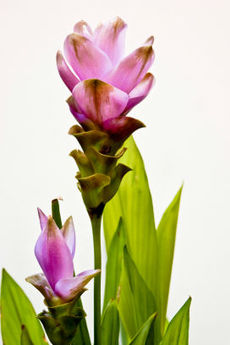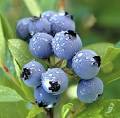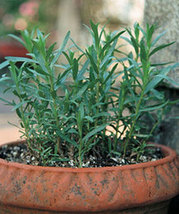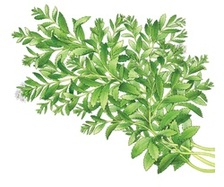 Turmeric in Bloom
Turmeric in Bloom Turmeric is a pungent, yellow spice commonly used in Indian and Thai cuisine, including most curries. The health benefits of turmeric including anti-cancer properties, protection against Alzheimer’s, pain relief, and much more. What’s more, the flowers of the turmeric plant are stunning and add a lush, tropical aesthetic to any backyard or garden. Unlike many vegetables and herbs, flowering turmeric will not affect the roots and the flowers and leaves are actually edible themselves. Here’s how to grow turmeric.
WHERE TO GROW
Turmeric does best in a hot, humid environment. In general, turmeric is only recommended for hardiness zones 9 and warmer if growing outdoors. However, it can be grown over summer outdoors in colder zones if dug up and brought inside over winter or grown in containers year round.
Plant turmeric somewhere where it will receive full sun or light shade. In areas with cooler summers, you should grow in full sun to have a better shot at a successful crop. In hotter areas, it will do well with a little afternoon shade.
Even when growing turmeric outdoors, you may want to consider growing it in a container that can be moved indoors once temperatures drop. Containers will also help to keep the soil warm and moist, essential to maintaining the plant to maturity. Choose a container that is at least 12 inches deep and equally as wide.
WHEN TO GROW
Turmeric takes 8-10 months to fully mature. It is dormant over winter, even in tropical climates. In general, turmeric plants do not do well when temperatures drop below 65° F. Plant in the early fall in zones 9-11. Plant in late spring (well after frost) in northern grow zones.
SOIL
Plant turmeric in rich, well-drained soil. It can grow in most any type of soil, but drainage will only help and thick, clay soils will make it more difficult to care for. Test the pH of the soil to make sure it is between 6.0 and 7.8.
PLANTING
Turmeric is grown from rhizomes (root cuttings) much like ginger, not from seed. In fact, turmeric does not propagate seeds. It can be a bit difficult to find sometimes. You can find turmeric root at Indian stores, specialty nurseries or online. Whole Foods usually carries it. Only plant healthy, firm rhizomes and avoid any that appear to be rotting or diseased.
Plant small rhizomes or pieces with at least 1 or 2 buds (facing up) about 2 inches deep. Water and keep the soil moist but not soaking wet until they sprout. Transplant if necessary once the plants are at least 2 inches tall. Keep them spaced about 16 inches apart. Thin if necessary to give them plenty of room to breath and flourish.
WATERING & CARE
Turmeric needs to be watered frequently. Keep in mind, it is normally a tropical plant. Frequent misting with a spray bottle can help, particularly when growing indoors. Keep the soil moist, particularly in hot, dry climates. Water less frequently in cooler climates and try to keep the soil from ever getting soggy.
Turmeric will benefit from bi-monthly feedings of a good organic fertilizer or compost tea.
WHERE TO GROW
Turmeric does best in a hot, humid environment. In general, turmeric is only recommended for hardiness zones 9 and warmer if growing outdoors. However, it can be grown over summer outdoors in colder zones if dug up and brought inside over winter or grown in containers year round.
Plant turmeric somewhere where it will receive full sun or light shade. In areas with cooler summers, you should grow in full sun to have a better shot at a successful crop. In hotter areas, it will do well with a little afternoon shade.
Even when growing turmeric outdoors, you may want to consider growing it in a container that can be moved indoors once temperatures drop. Containers will also help to keep the soil warm and moist, essential to maintaining the plant to maturity. Choose a container that is at least 12 inches deep and equally as wide.
WHEN TO GROW
Turmeric takes 8-10 months to fully mature. It is dormant over winter, even in tropical climates. In general, turmeric plants do not do well when temperatures drop below 65° F. Plant in the early fall in zones 9-11. Plant in late spring (well after frost) in northern grow zones.
SOIL
Plant turmeric in rich, well-drained soil. It can grow in most any type of soil, but drainage will only help and thick, clay soils will make it more difficult to care for. Test the pH of the soil to make sure it is between 6.0 and 7.8.
PLANTING
Turmeric is grown from rhizomes (root cuttings) much like ginger, not from seed. In fact, turmeric does not propagate seeds. It can be a bit difficult to find sometimes. You can find turmeric root at Indian stores, specialty nurseries or online. Whole Foods usually carries it. Only plant healthy, firm rhizomes and avoid any that appear to be rotting or diseased.
Plant small rhizomes or pieces with at least 1 or 2 buds (facing up) about 2 inches deep. Water and keep the soil moist but not soaking wet until they sprout. Transplant if necessary once the plants are at least 2 inches tall. Keep them spaced about 16 inches apart. Thin if necessary to give them plenty of room to breath and flourish.
WATERING & CARE
Turmeric needs to be watered frequently. Keep in mind, it is normally a tropical plant. Frequent misting with a spray bottle can help, particularly when growing indoors. Keep the soil moist, particularly in hot, dry climates. Water less frequently in cooler climates and try to keep the soil from ever getting soggy.
Turmeric will benefit from bi-monthly feedings of a good organic fertilizer or compost tea.

HARVESTING
Harvest turmeric root 8-10 months after planting. While the leaves and stems are edible, most people harvest turmeric only for its roots. Most herbs can be harvested throughout the growing season, but turmeric root is best if harvested all at once when mature. Dig up the rhizomes and save a few pieces to plant for the following season. When planting in the spring in cooler climates, you can harvest before the first frost of the fall but will not yield much turmeric. Best to bring the plants indoors for the winter and harvest in early spring.
OVERWINTER DORMANCY
Turmeric is dormant over winter. In warmer climates, the roots can be left in the ground and will survive and sprout new flowers in the spring. In colder climates, you need to transplant to containers and/or move your turmeric indoors. If you live in an area with mild winters where freezing ground is only of small concern, you may be able to mulch over your turmeric for the winter to protect them until the spring. In general, only growers in zones 7b-11 should leave turmeric outside over winter. The roots will survive as long as they don’t freeze.
TIPS & ADVICE
Use gloves when peeling turmeric root as they may stain your hands yellow.
Boil turmeric for 45 minutes, peel and dry for about a week. Then grind into the fine yellow powder used in curries and other spices.
Store roots in a cool, dark place until use.
Aphids and mites by be attracted to turmeric, but most insects in the U.S. are not interested in the plant. Spray them off with a hose.
Sources
growthis.com
Wikipedia/turmeric
Harvest turmeric root 8-10 months after planting. While the leaves and stems are edible, most people harvest turmeric only for its roots. Most herbs can be harvested throughout the growing season, but turmeric root is best if harvested all at once when mature. Dig up the rhizomes and save a few pieces to plant for the following season. When planting in the spring in cooler climates, you can harvest before the first frost of the fall but will not yield much turmeric. Best to bring the plants indoors for the winter and harvest in early spring.
OVERWINTER DORMANCY
Turmeric is dormant over winter. In warmer climates, the roots can be left in the ground and will survive and sprout new flowers in the spring. In colder climates, you need to transplant to containers and/or move your turmeric indoors. If you live in an area with mild winters where freezing ground is only of small concern, you may be able to mulch over your turmeric for the winter to protect them until the spring. In general, only growers in zones 7b-11 should leave turmeric outside over winter. The roots will survive as long as they don’t freeze.
TIPS & ADVICE
Use gloves when peeling turmeric root as they may stain your hands yellow.
Boil turmeric for 45 minutes, peel and dry for about a week. Then grind into the fine yellow powder used in curries and other spices.
Store roots in a cool, dark place until use.
Aphids and mites by be attracted to turmeric, but most insects in the U.S. are not interested in the plant. Spray them off with a hose.
Sources
growthis.com
Wikipedia/turmeric







 RSS Feed
RSS Feed
